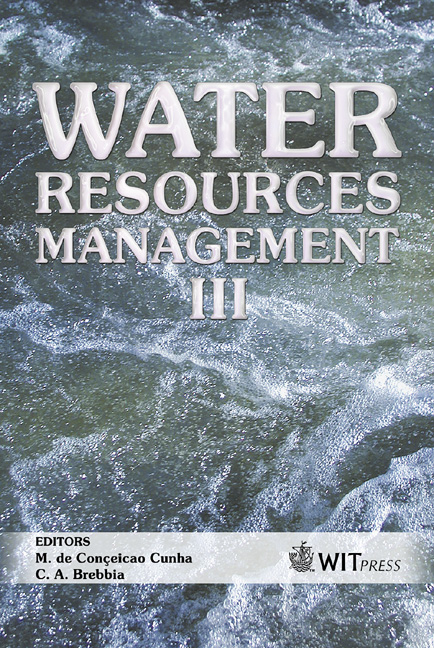Nitrate And Pesticide Contamination In Water Supplies Of The Izmir Region
Price
Free (open access)
Transaction
Volume
80
Pages
9
Published
2005
Size
389 kb
Paper DOI
10.2495/WRM050291
Copyright
WIT Press
Author(s)
B. Ovez, M. Yuksel & M. Saglam
Abstract
We investigated the ground water quality of a typical agricultural area of the Agean Region, in the İzmir Districts, concerning nitrate and pesticide pollution. Elevated nitrate and pesticide concentrations in drinking water present a potential risk to public health. The ground water was sampled from wells that are used as a local drinking water supply and for the irrigation of farms. The results indicate that the ground water of these areas has started to be contaminated by nitrate because of fertilizer use. At one location, the maximum contamination levels for pesticides in drinking water were exceeded by three pesticides (propargit, endosulfan, fenitrothion). Keywords: drinking water, maximum contamination level, nitrate contamination, pesticide analysis, pesticide contamination, solid-phase extraction. 1 Introduction In the world there is growing evidence of ground water contamination because of the intensive application of fertilizers and pesticides. Nitrate levels have been increasing in drinking water supplies in Europe, the United States, Canada, Africa, the Middle East, Australia, and New Zealand. In 1985 the American Water Works Association survey showed that 23% of primary drinking water standard violations were due to excessive nitrate concentrations. A survey conducted by the U.S. Environmental Protection Agency (US-EPA) in 1990 indicated that 1130 public and approximately 250 000 private domestic water supply wells might have exceeded the maximum contamination level for nitrate. The World Health Organization (WHO, 1972) found that 31.5 % of 2000 wells surveyed in Canada had more than 20 mg/L NO3 -N [8].
Keywords
drinking water, maximum contamination level, nitrate contamination, pesticide analysis, pesticide contamination, solid-phase extraction.





